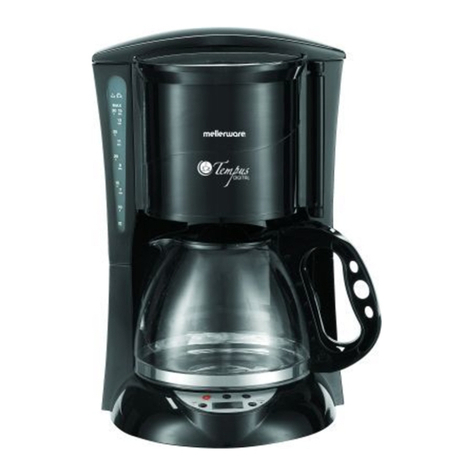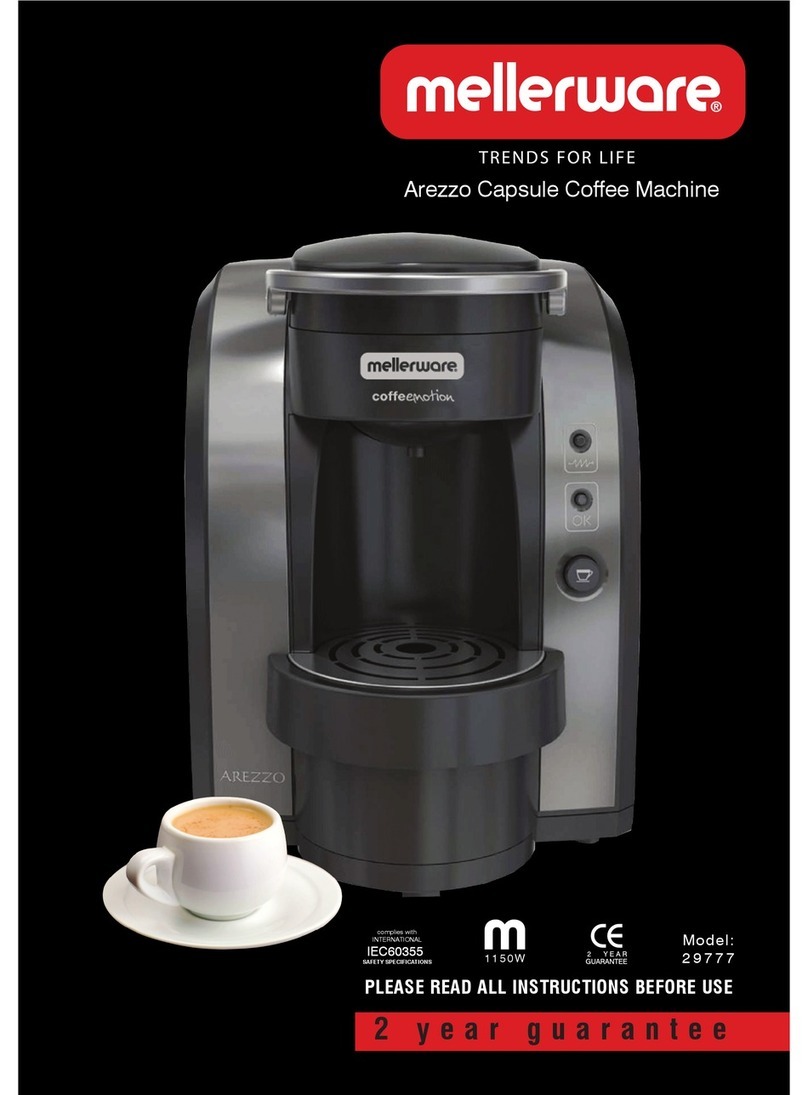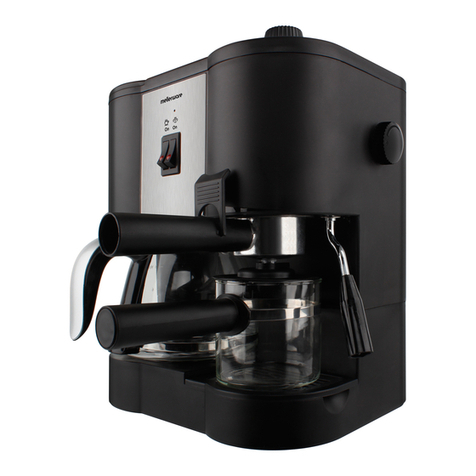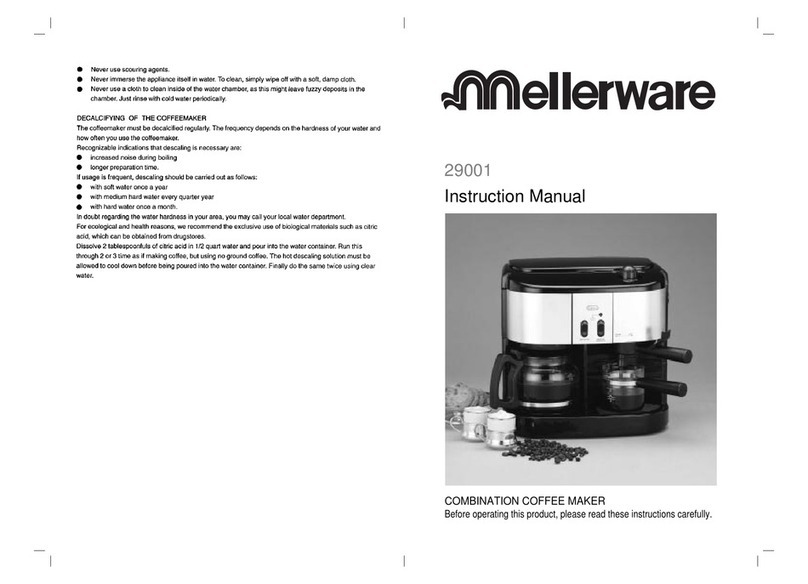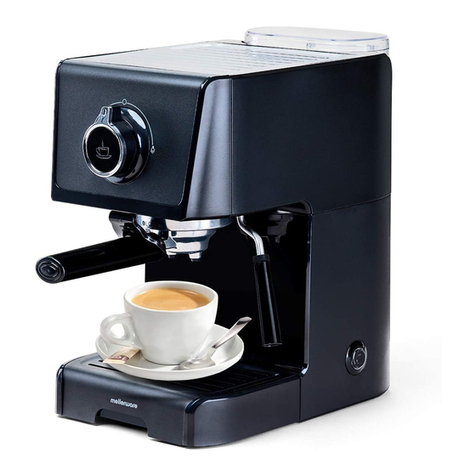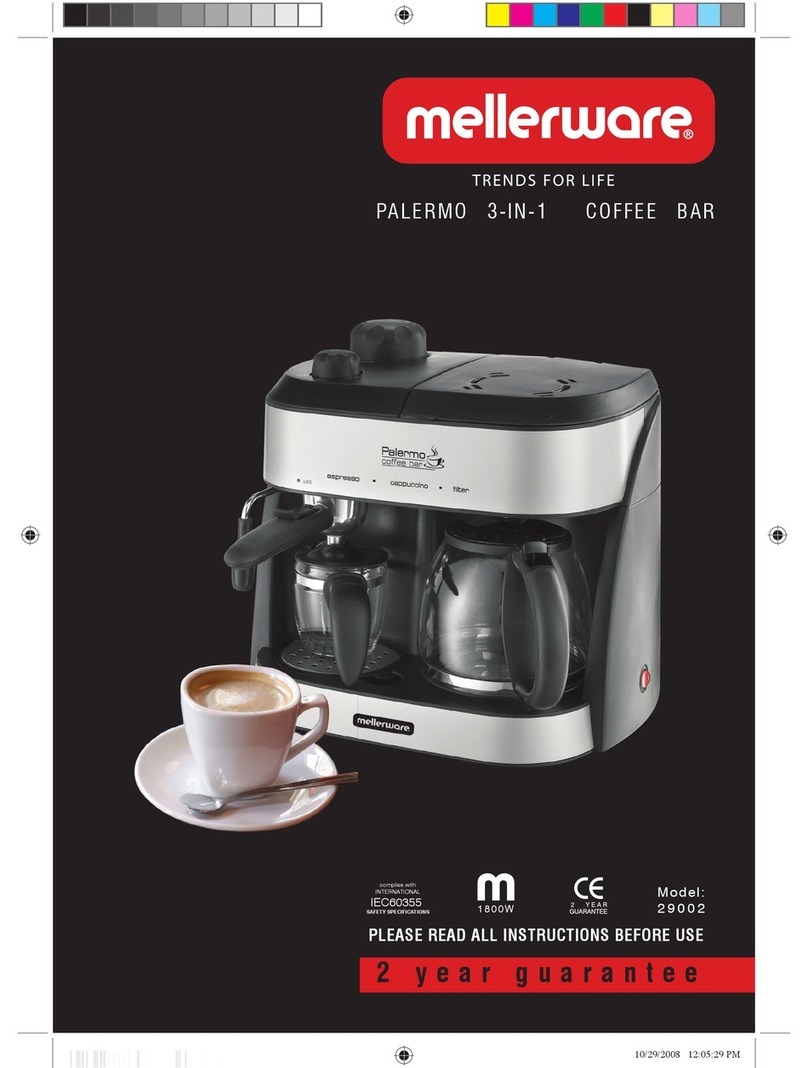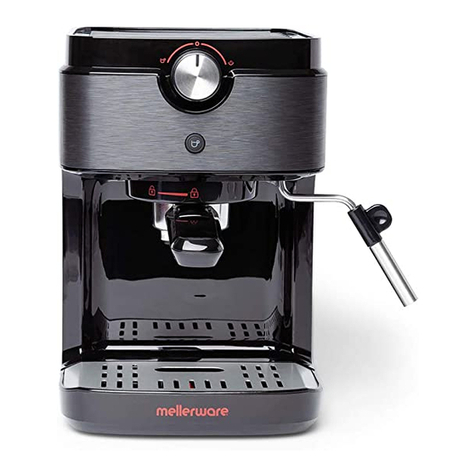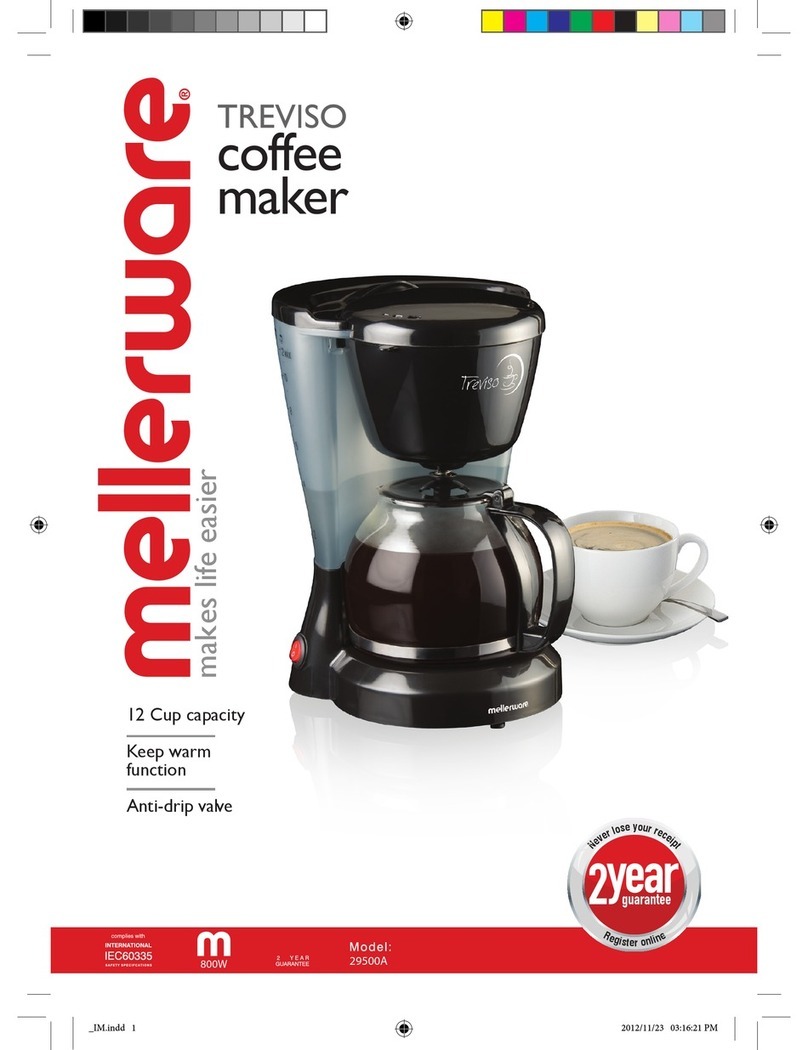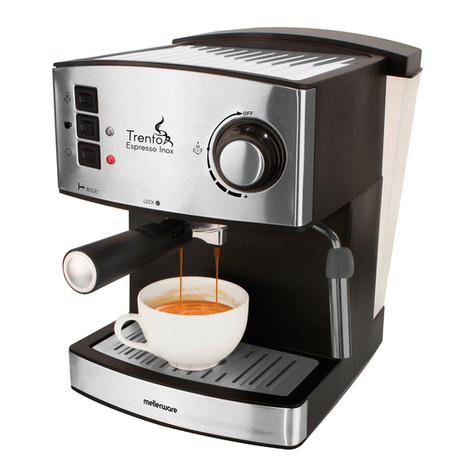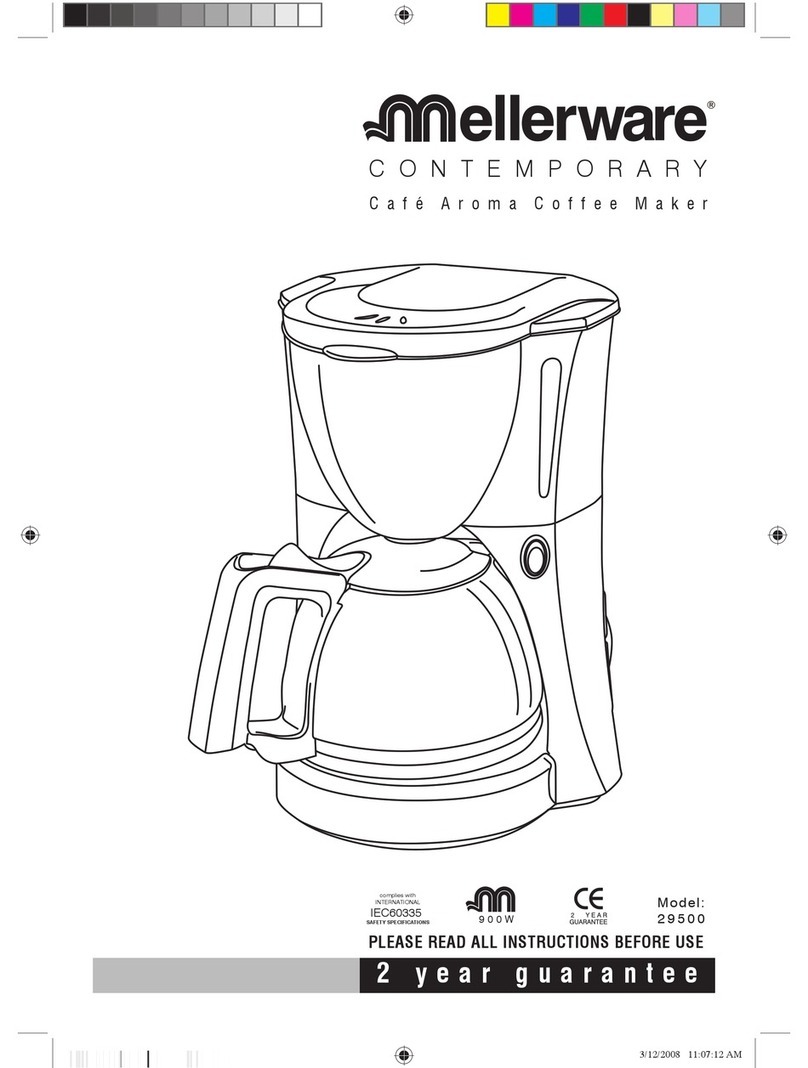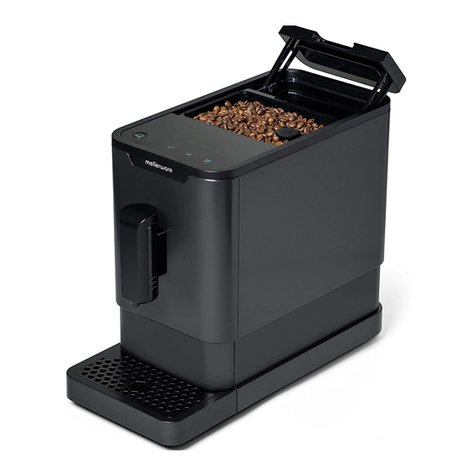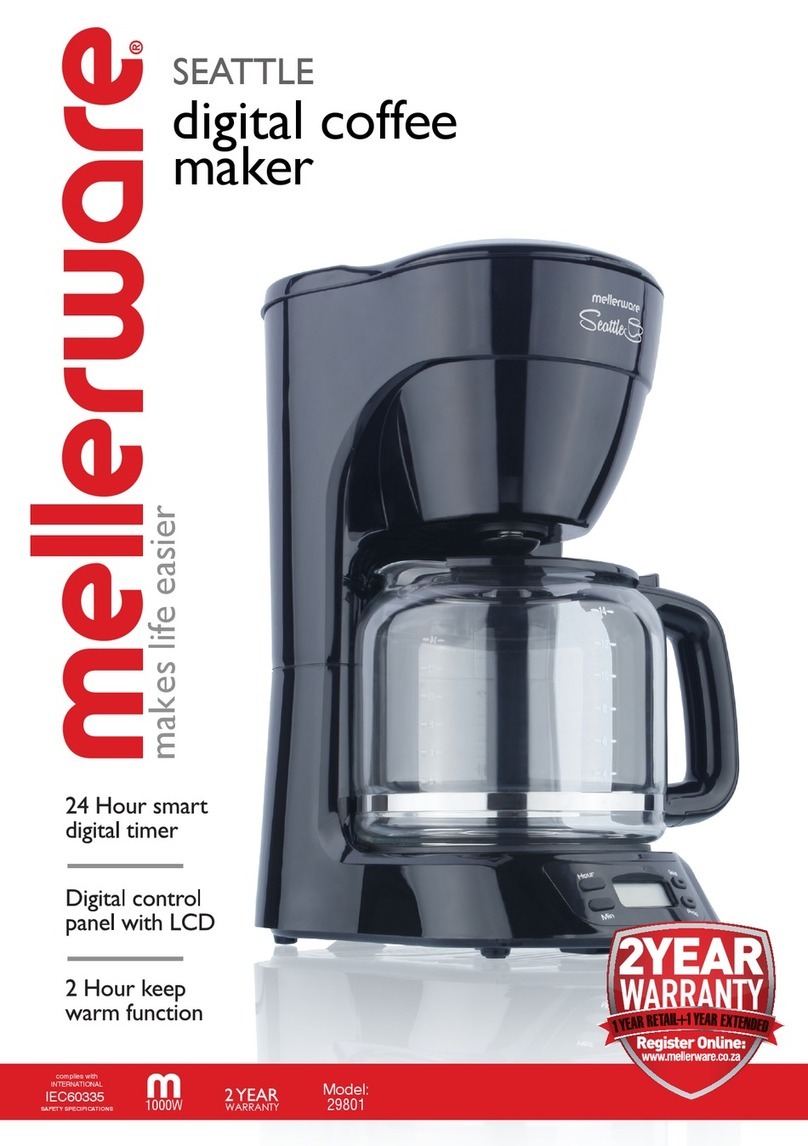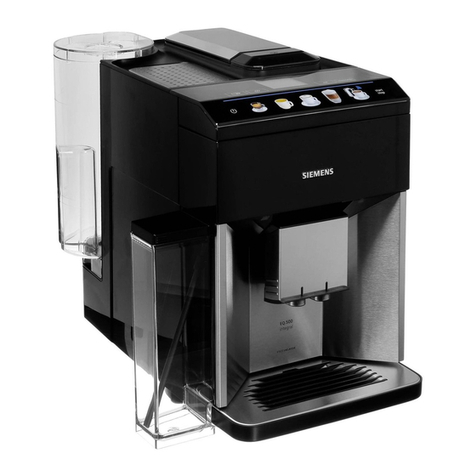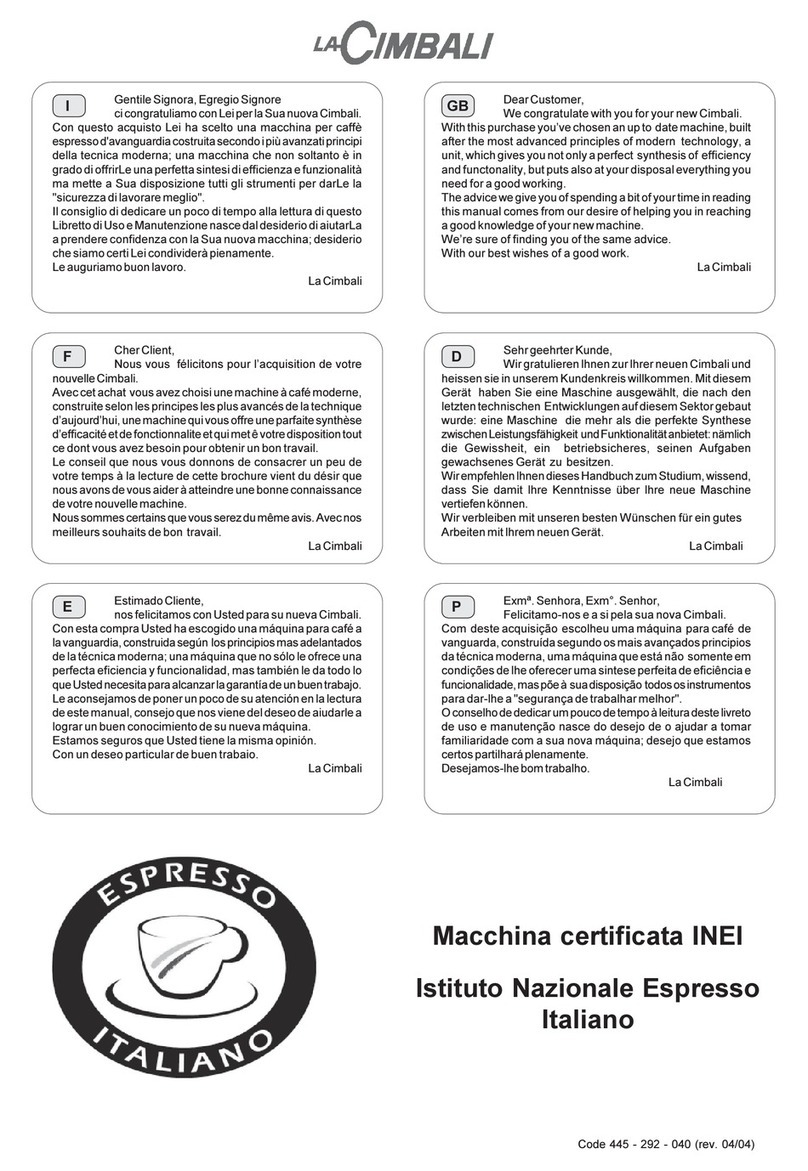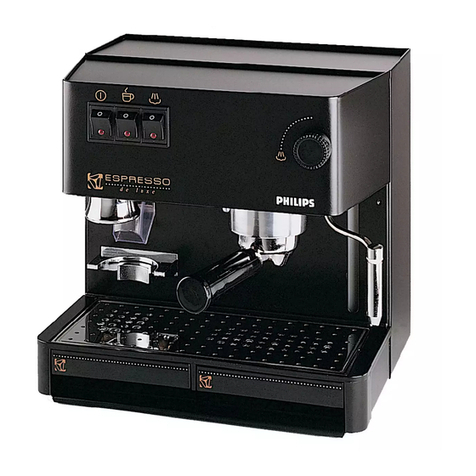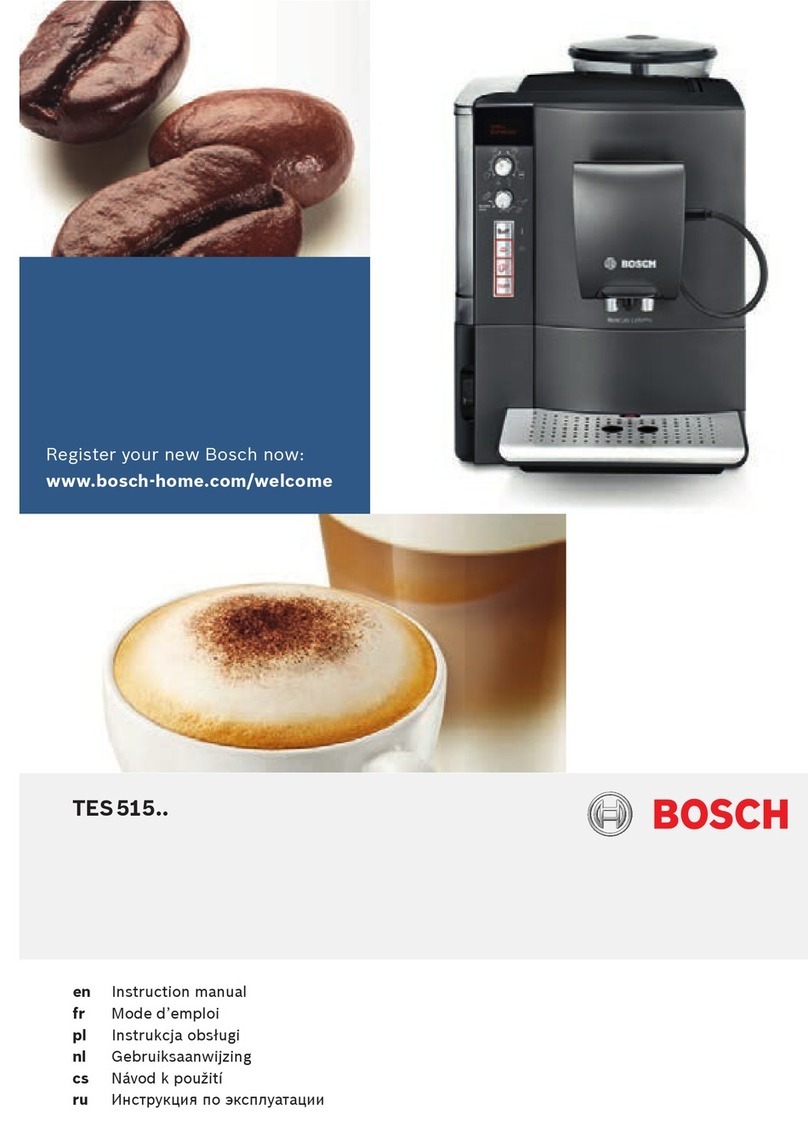
VOLUME ADJUSTING
- Select any lter to put into the porta-lter. Posi-
tion the porta-lter to the unit.
- Press any coffee button and keep pressing it
down until desired volume is reached. Then
release the selected button, the desired volume
will be reached.
NOTICE:
- Min. setting time for single cup and double cup
is 10S.
- Max. setting time for single cup: 60S.
- Max.setting time for double cup: 90S.
RESET TO DEFAULT SETTING
- 1 Plug the unit in.and power on.
- 2 pushing the on/off switch (F) to OFF. Rotate
the control knob to steam function.
- 3 Press down both single cup coffee button
and steam button simultaneously, pushing the
on/off switch (F) to ON position at the same
time.
- 4 The two espresso buttons will ash by turns.
- 5 The unit is now reset to the default setting.
AUTO-OFF FEATURE:
- The Mellerware machines are designed to save
energy.
- To that end, after some minutes, if during this
period the user has not performed any action
on it, the unit switches to energy saving mode.
- To return to normal operation you should just
press one of buttons (E).
- Once you have nished using the appliance:
- Turn the appliance off, pushing the on/off
switch (F) to OFF position
- Unplug the appliance to the mains.
- Remove the water from the water tank.
- Clean the appliance.
CLEANING
BASIC CLEANING
- Disconnect the appliance from the mains and
let it cool before undertaking any cleaning task.
- Clean the equipment with a damp cloth with a
few drops of washing-up liquid and then dry.
- Do not use solvents, or products with an acid or
base pH such as bleach, or abrasive products,
for cleaning the appliance.
- Do not let water or any other liquid get into the
air vents to avoid damage to the inner parts of
the appliance.
- Neither parts of this appliance are suitable for
cleaning in the dishwasher.
- After washing, dry all the parts before tting
them together and storing.
CLEANING THE FROTHING WAND (FIG 1)
- CAUTION! The frothing wand, frothing tip, and
frothing sleeve may be VERY HOT.
- It is recommended to purge and wipe the froth-
ing wand after steaming milk to prevent depos-
its of dirt and before turning off the machine.
- To do this, pull the frothing sleeve down and
clean under warm running water.
- Fill a cup with a bit of water, immerse the froth-
ing wand into the water, press the steam button
to start the pre-heating. When ready turn the
Control Knob to the “Steam icon” letting out a
little steam. turn the Control Knob (D) towards
the position “0”
- Use a cloth to dry the frothing wand and re-
place the frothing sleeve
- In case no steam comes out of the frothing
wand, hardened milk blocks its path.
- Carefully use a needle to loosen the milk resi-
due from the opening of the frothing tip
- (g 1) to remove any blockage.
- Once clean, rinse with running water from the
tap and reassemble it. Then steam again.
HOW TO DEAL WITH LIME SCALE
INCRUSTATIONS:
- For the appliance to work correctly it should be
kept free of lime scale or magnesium incrusta-
tions caused by the use of hard water.
- To prevent this kind of problem, we recommend
the use of water with low lime or magnesium
mineralisation.
- However, if it is not possible to use the kind of
water recommended above, you should period-
ically remove the lime scale from the appliance:
- Every 6 weeks if the water is “very hard”.
- Every 12 weeks if the water is “hard”.
- To do so, we recommend the use of the spe-
cic product Decal for this kind of machine,
which can be found in specialised shops and
authorised technical services.
- Homemade solutions are not recommended
in the de-scaling of this appliance, such as the
use of vinegar.
